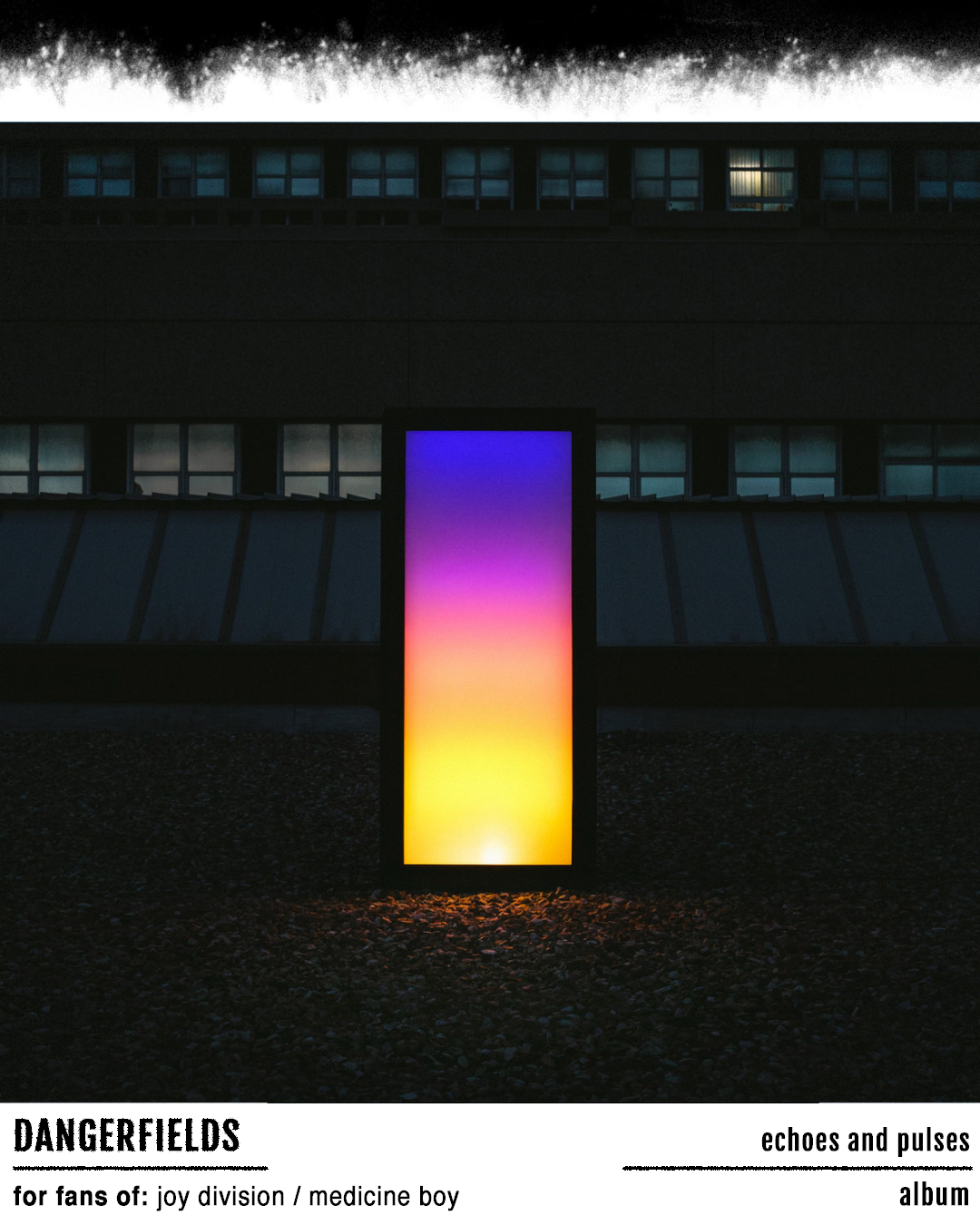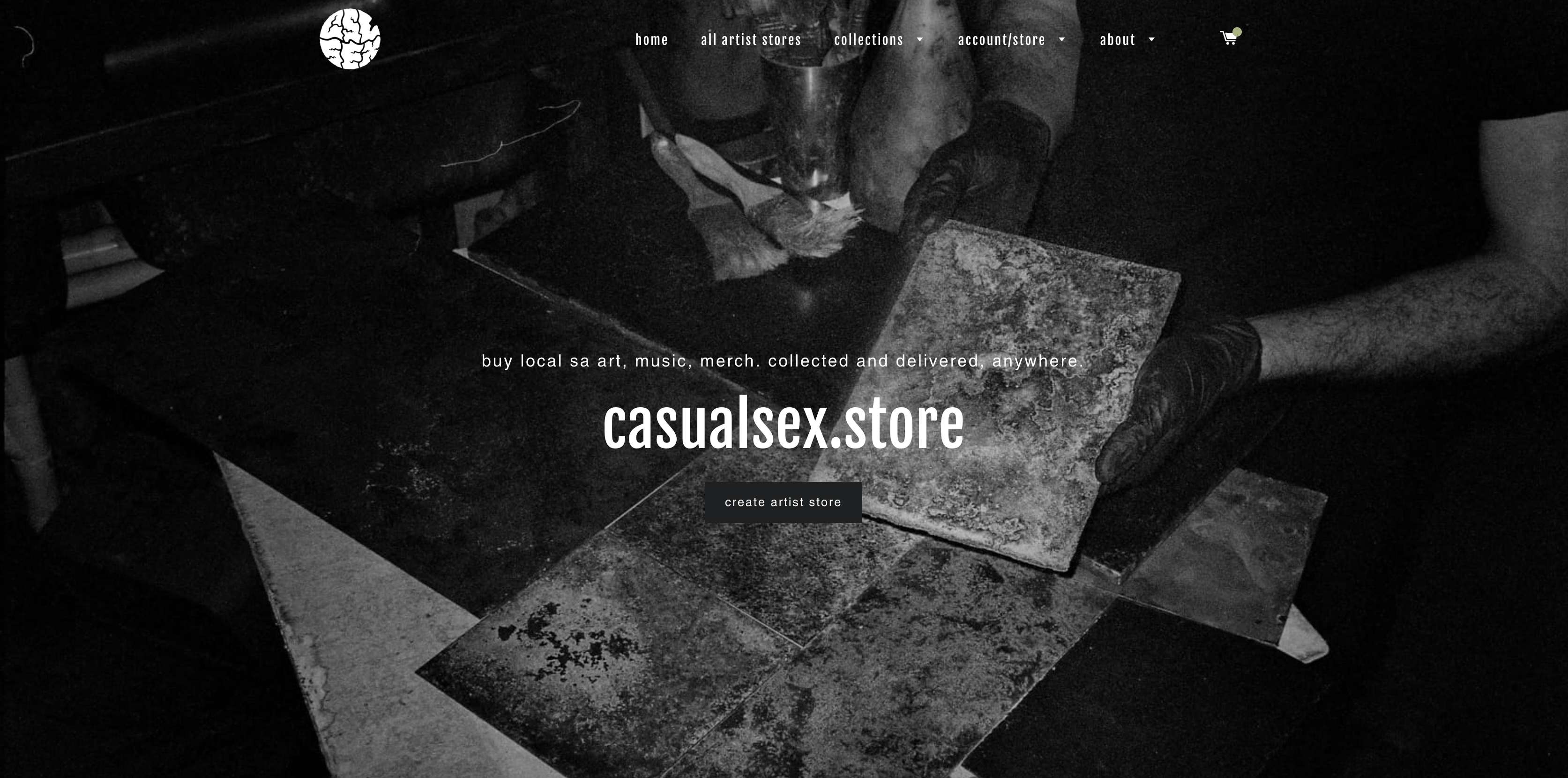welcome to casualsex.store – south africa’s first online artist-market. and as a non-warehousing, multi-disciplinary platform, it seems it’s the first of its kind – worldwide.
yes, there are platforms similar to ours – in the U.S – and they’re used by hundreds of south african artists. but, thing is, they’re not built to actively grow artists in any local sense… they’re built to line international pockets, and build the music scenes on their home soil.
casualsex.store is here to fight that. cslsx is here to make sure that the talent, inventiveness, and tenacity of south african artists has more than a fighting chance.
so, what you’ll find here is SA’s first fully-functioning, online market-store – with secure payments; artist store dashboards, checkout-integrated shipping from the artist’s front door to yours [at low rates, anywhere – worldwide]; collect-from-artist; local collections browsing. etc. every artist has their own account, control and ownership, with functionality for labels + collectives to join this local platform too.
Robin and I grew up together—meeting when I was about 11, and he around 12—spending our kid years rock climbing while being precocious musos who were both obsessed with Kurt Cobain far beyond when it was appropriate to understand “Pennyroyal Tea” as an allegory for heroin addiction. So, to witness the unfolding of his cyber muse, casualsex.store, has been more than an honour. In fact, it’s made me extra grateful to be alive in this time and space. The thing is, Robin has always been intensely passionate and driven and to see the fervour with which he is approaching his creative life now is a great testament to the 16 year old I knew, who was inseparable from his records and guitar. Paying attention; attentively, pays off—and Robin has always; in all ways, savoured art and music like no one else I know. So, to launch a platform that innovates accessibility to South African creativity is really just a natural progression from being an obsessive appreciator turned musician—to now heading up a platform that facilitates putting our local scenes on the map. This especially with regards to exposure and commerce-driven channels. If anyone is tired of artists not getting paid their dues, or going unnoticed, it is Robin (and of course, all the artists!).
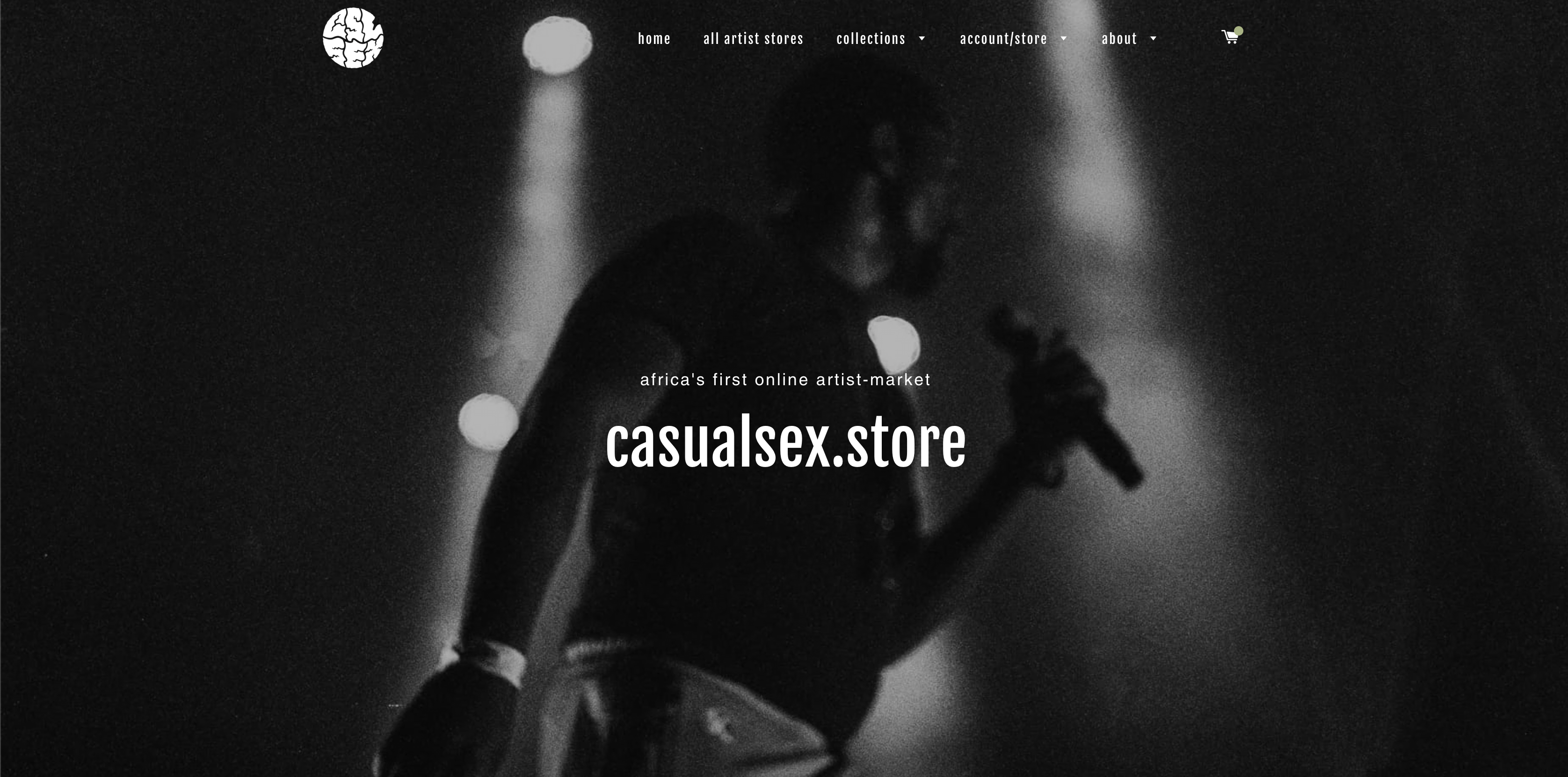
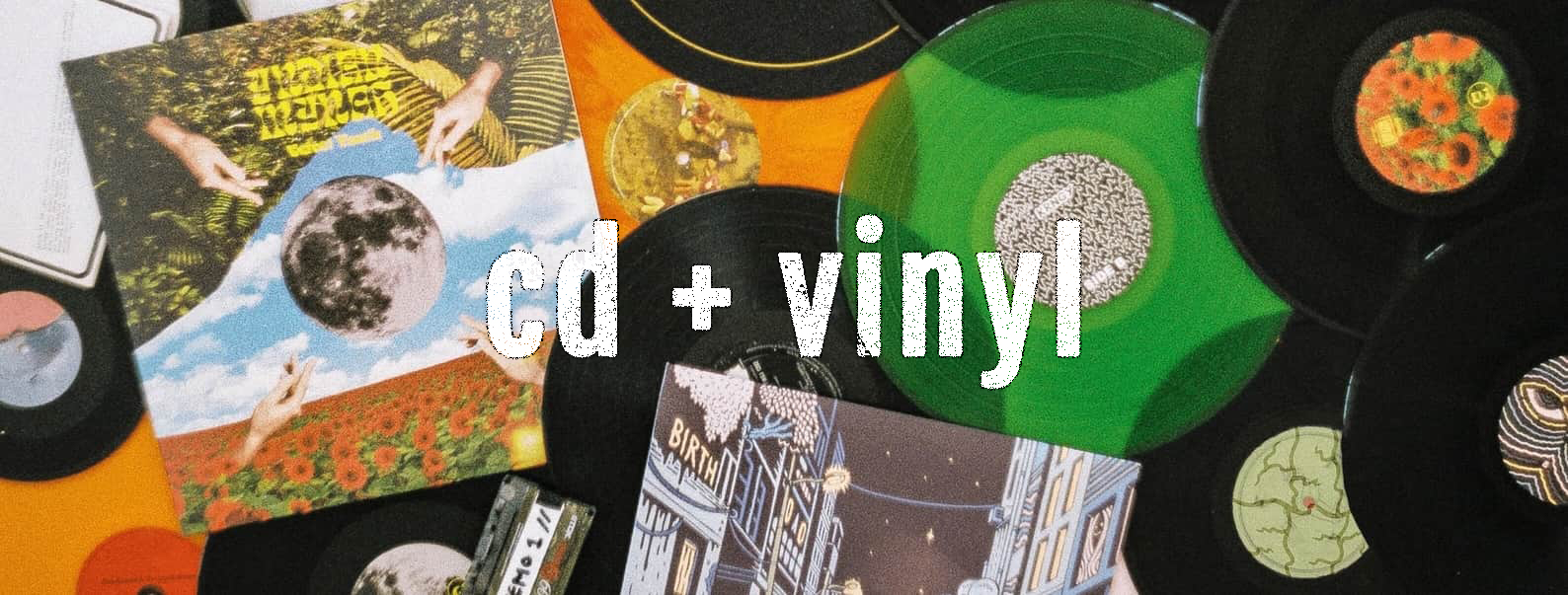
The online interface of the store is remarkably beautiful. A clean, minimal structure with lowercase typography is understated in a way that carries the artists’ actual work effectively; the whole portal reads impressively. Now carrying 65 artists, the soft launch has exceeded all expectations and as Robin goes onto explain in the interview we had; it has been crafted and coded with his own blood, sweat and tears. In a time such as this, casualsex.store provides an immense dose of futuristic anticipation for a world in which creativity transcends the institutional structures of corporate dominion. This is independence and business transparency at its finest. With every R100 spent at the store, casualsex donates a school days’ worth of biodegradable cotton sanitary pads to menstruating individuals living in South Africa’s rural areas, in partnership with the Sheba Feminine and Cora initiative. I somehow wonder if it’s too good to be true? If our generations really IS this capable of such acts that go beyond rebelling against systems, to actually implementing our own. I know its not too good to be true though because as you will see, the stark genius and originality of every artist on the platform is merely a showcase of what already exist in the minds and hearts of South African artists. And it is only the beginning.
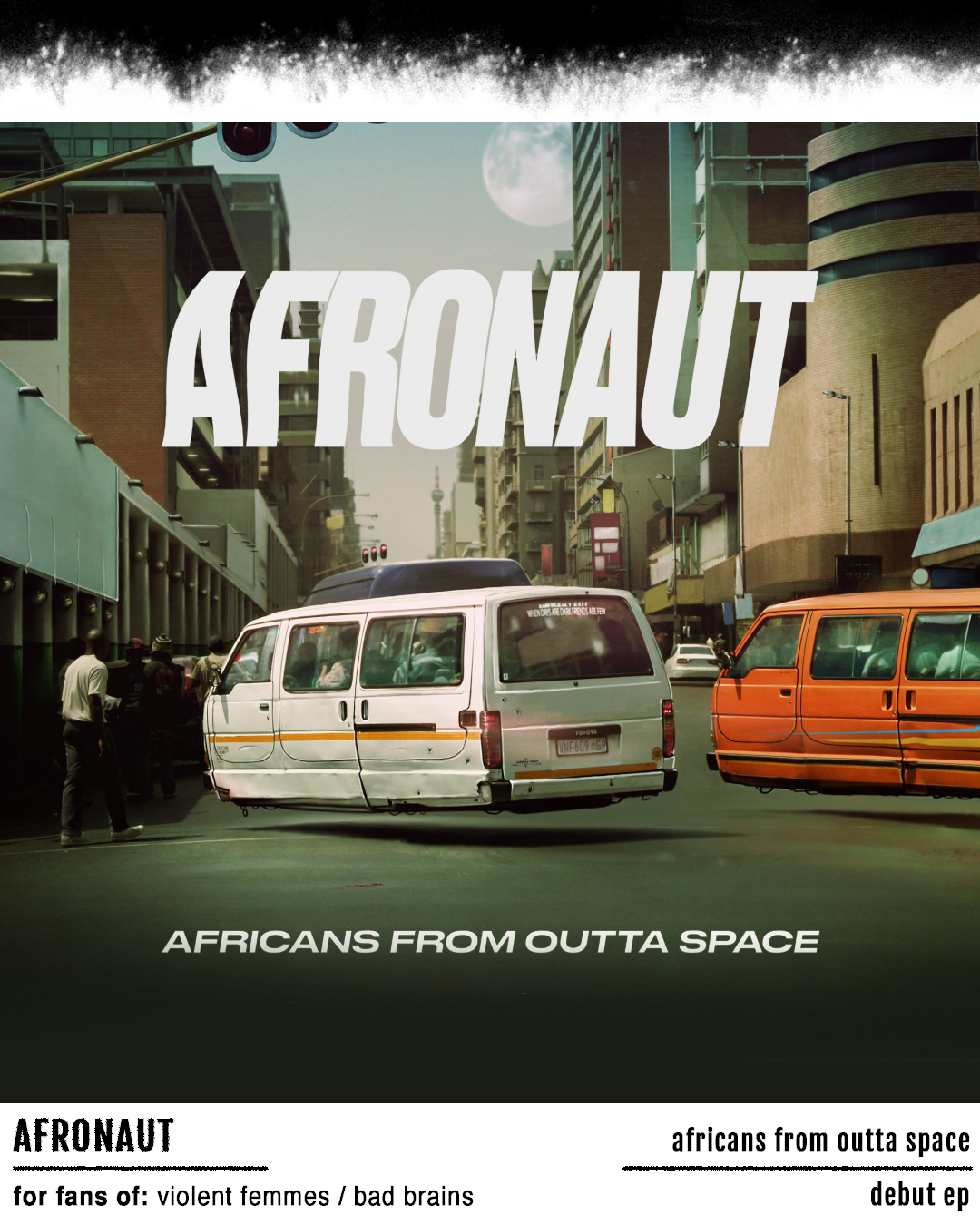
How did you begin conceptualising casualsex.store?
I daydream a lot. It’s gotten more useful as I’ve gotten older—20 something years of zoning out—and it’s now a space to drop into to work on things in a more liquid way. In this state, you can playfully imagine what an in-utero casualsex.store would need to achieve, and what problems would be solved by the perfect idea of the store. By doing as much construction as possible while daydreaming, you aren’t restricted by any real-world structures or patterns. The luxury of conceptualising things this way [is that] you can build the roof or plan the plumbing before you’ve built the walls or floor. So that was the how. More practically, I wanted strong contrast between function and purpose; where function is the system that supports the purpose: the artists. For example, monochrome/colour, uppercase/lowercase. As much efficiency as possible in the way one moves through the platform: where efficiency is experiencing as much artist-centric stuff as possible during any journey.
The site gets a lot of traffic (the power of a marketplace/collective effort and most of them are probably just exploring. So, when you explore the store, there are subtle little hippo-trails you can run on while idly browsing that will deliver you to something new. They aren’t obvious, they are just part of the design and flow/ux. This also had me imagining a dystopian future cityscape of modular, privately owned skyway roads, which global companies compete over to direct traffic through their cities of business. There’s always gotta be a dystopian idea for every utopian one. Once the month or two of daydreaming was over, I grabbed a thick, thick chunk of blank monami paper and started writing.
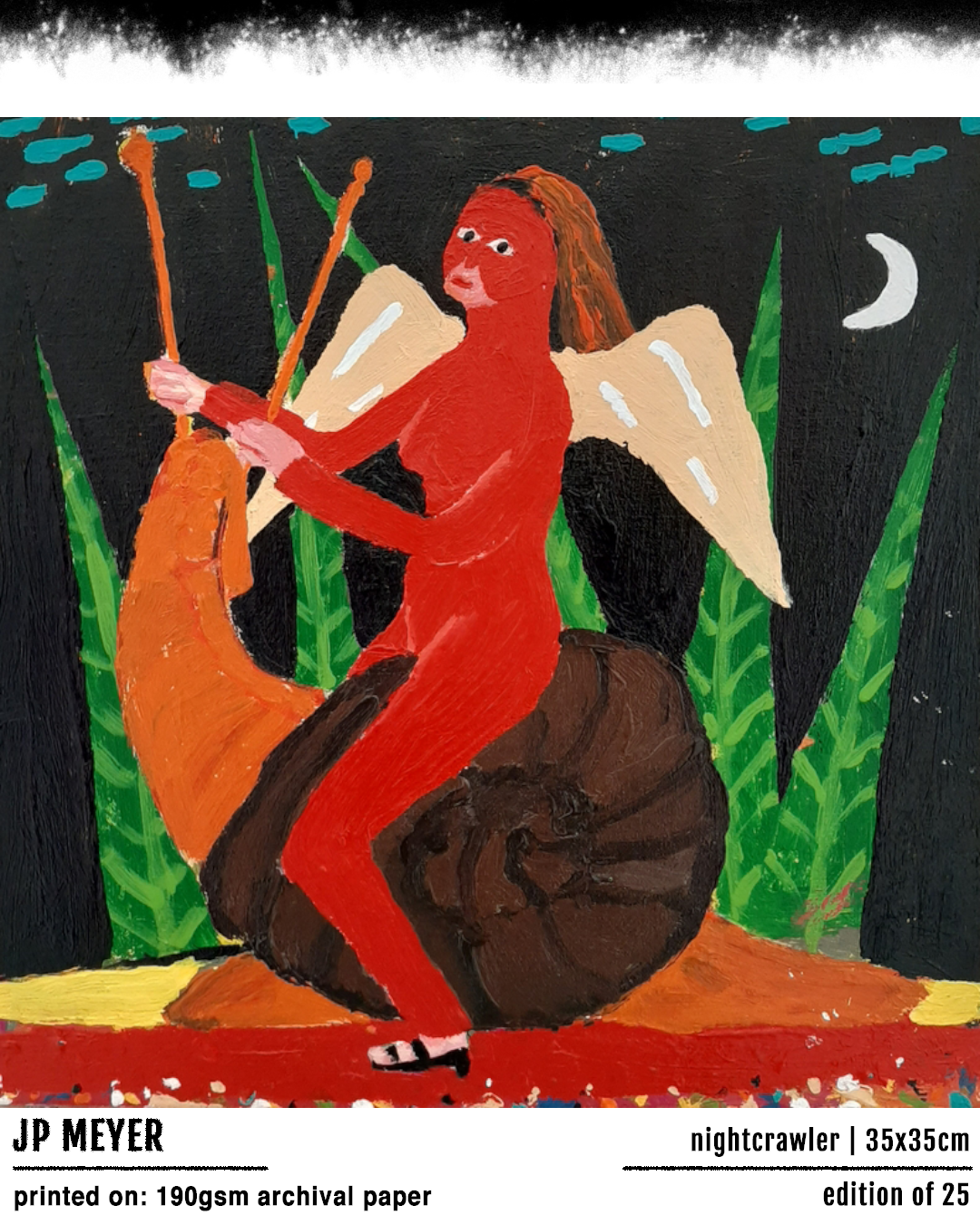
I know there was an intensive amount of work that went into this labour of love; can you elaborate on the intricacies of building an independent platform for artists?
Almost all of the work in designing, writing, mapping out, hashing out the platform (etc etc) was done by pen and paper. There’s a stack in my house about a closed-fist in height where each page is choked with notes and little drawings, tables, lists and long passages. I wanted to condense it and release it as a zine. However, Isabella who is far wiser than me and who speaks with the visual artists, reminded me that the first person who’d have the funds to like, employ a team of people to reify the zine—and copy the idea—would probably also own a chain of malls or something ghastly and late-stage. Or some Nivéa executive. We can’t give them everything.
[So I] then transferred and organised those notes into a mammoth excel book which included the general plan for the financial system. casualsex.store was designed entirely mobile first; even the photography is predominantly shot in portrait. Then I drew out (pencil/ruler) the platform as a whole: every page and page-type in the user and/or artist journey, mapped together with string on my shitty carpet. I scanned those pages in then put them into photoshop, which required learning adobe/photoshop, a deathly 19 hour day. I don’t advise it. The film stills were then slotted in as part of the visual; I took a specific film burn (start of a roll) shot to create the broken banner-strip. Part of this process was also learning css/coding. The parts of the system had to speak to each other; much like a nervous system. If an artist changes the details of their listed oil painting, album or piece of merch in their own store—those details need to reflect in multiple other places in the connected marketplace, etc etc. There was also the backend system to figure out, as well as the admin dashboard to manage these things and to help artists with their accounts and stores and so forth.
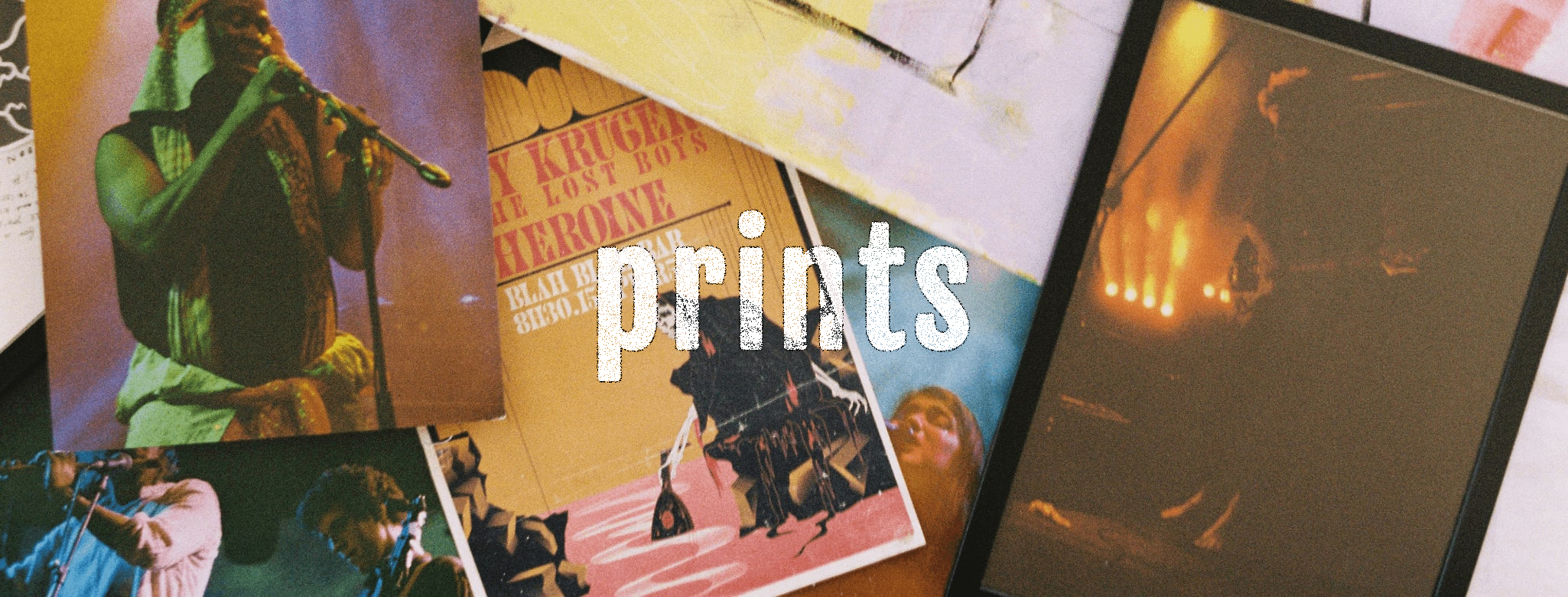
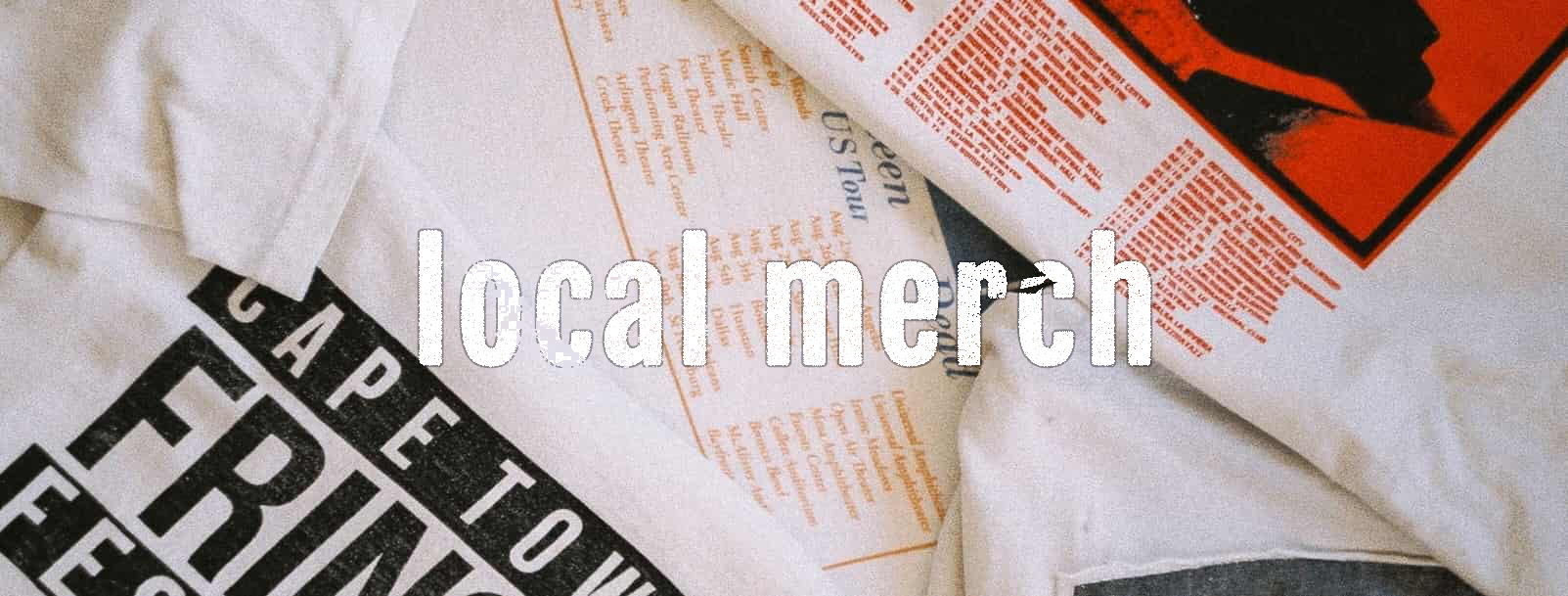
How did you go about cataloguing so many amazing creatives—did you have a few in mind initially, followed by research?
I’m a bit of a moth—as are my friends—to the glitchy creative lightbulbs across SA. From the music we listened to, shows we watch and conversations we have; the groundwork was done. Reaching out to more artists, and having the necessary conversations unpacking what we thought was needed as a South African creative/artist; that was done in a more structured way. Working out where in the country creatives were, what was slowing them down, and following the paths to new ones. You can imagine the current state of artists online (besides rad media platforms like you guys and texx) as one where every artist is trying to get people to visit their own separate webstore, isolated from all of the other roads crossing cyberspace. casualsex.store is made to solve this problem and make the works of local artists easily accessible the public.
I really believe casualsex as a platform, is innovative in a way that I haven’t seen in a while. Especially as collaboration and co-creation is so needed in creative spaces. How do you foresee the community growing? Vision wise, not necessarily with expectations—as if there’s anything last year taught us; is the uncertainty of each day.
Thank you dude, and yes exactly: collaboration. IMO, that is fundamental to almost every creative idea. Even when work is done in social isolation, it’s done in collaboration with our environments. There are some upcoming releases and features of the platform that are still under wraps until likely only well into 2021. They all speak to the same thing; integrating art into the fabric and habits of South Africans and innovating on the scaffolding around us to make being an artist more profitable. Along with making it easier to find the local artists that suit you as opposed to just getting served numbly by algorithms. You don’t ‘discover’ music on algorithmic streaming; you get exposed. It feels very different. We can have both, but better.
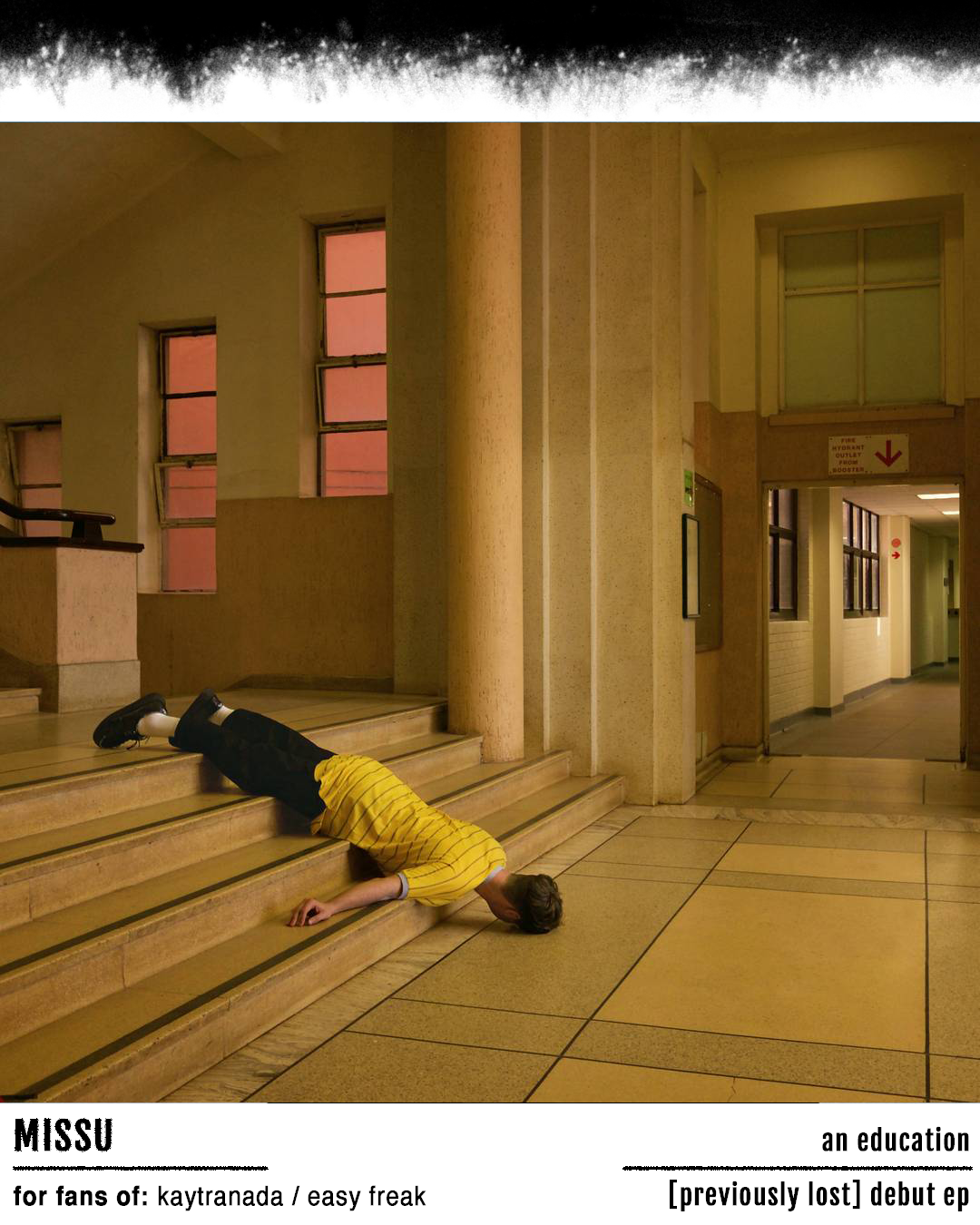
I am sure it’s hard to pick any “favourites”, but which artists are you showcasing on the platform who have really caught your eye?
Outside of the go-to icebreakers of the Cape Town underground psych/post-rock scene, MISSU is a definite. His debut ep an education is exclusive to his store and is super potent with similar production touches to Josh Berry of HONEYMOAN. Sometimes you can immediately hear an artist is in total control of their ideas when music is both subjectively and objectively good. Don’t kinkshame me!, dig his collab with Durban’s Red Robyn. MOONGA K too who falls on the more RnB side and is based in Jozi. Robyn and him both collaborate with a lot of artists, and Moonga has expertly balanced tracks (and a gnarly falsetto). Kristie Pietersen and Pip Tully are definite visual art favourites. Paul Wallington’s oils, JP Meyer’s prints. There’s a masterful woodcut artist I personally believe will rock South African contemporary art. He will be joining in months to come—we’ll announce it. But yes, it’s very hard to choose, there’s fantastic work up. This would be a long list. Bronkelbok has work we’re really waiting to see more of. We love her etching print, dooie mot especially. And some of these large, detailed artworks you can order for the price of a night of getting Uber Eats. Work that’ll enrich your life, home and conversations for years to come.
The response to casualsex.store has been overwhelming as you have told me; what avenues will ensure this momentum keeps growing?
The release of the platform was the first release of a 4-part series to come which will complete the concept. If the world doesn’t melt, we’ll be able to put out a series of things we believe could be game-changing in their respective areas and will positively affect the way the public expects to engage with art and artists. It’ll be one big ol’ rona-free catered wedding party. I wish we could spill all of the beans in one go! We want the momentum to be driven by positive impact alone. I think it’s important that music artists are made aware that they can join no matter who they are; and that creating a store is easy. Visual artists are welcome too, however, we’d like to continue curating the visual arts section for some time—so visual artists should please get in touch with us privately via @casualsex_.


